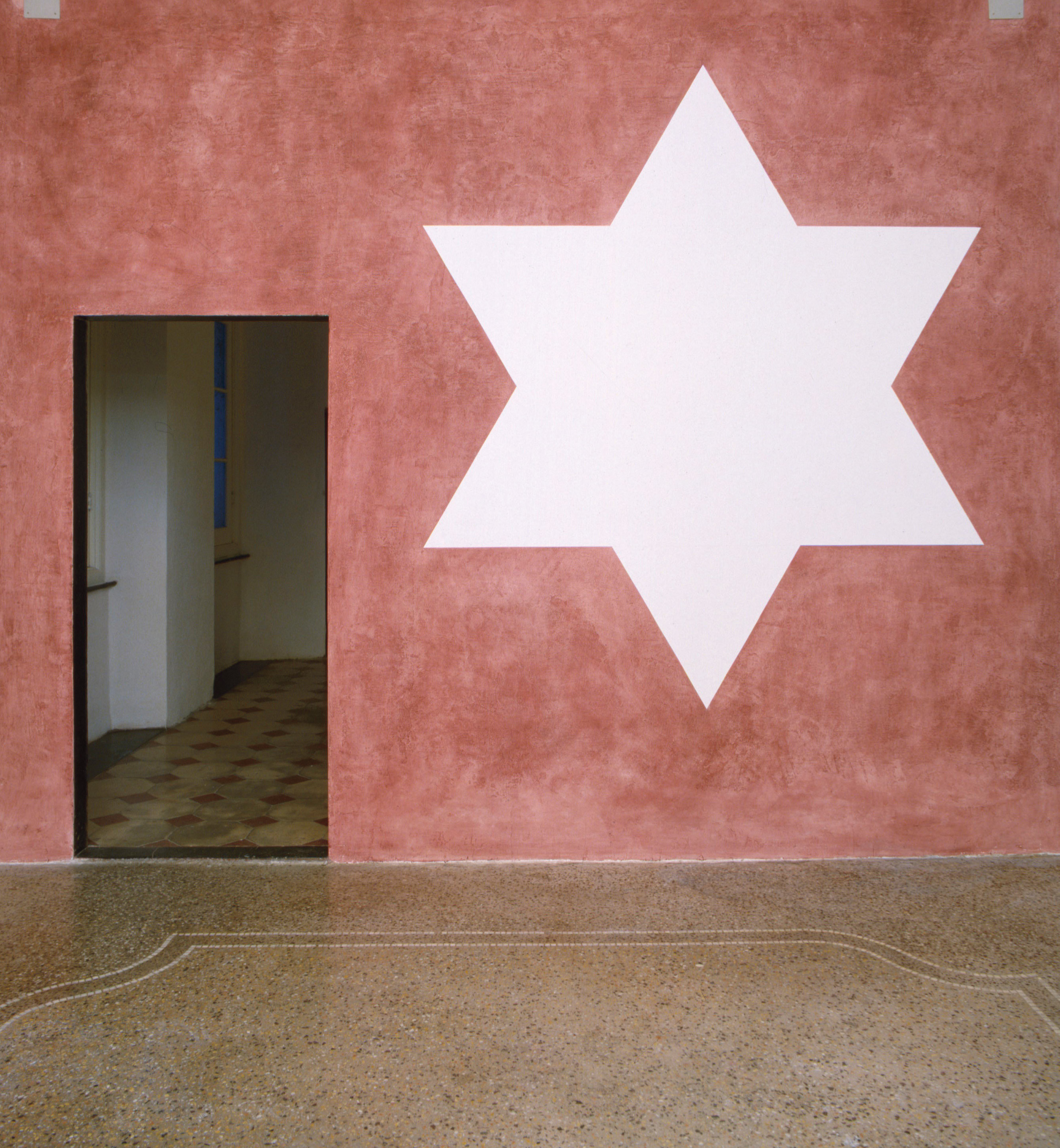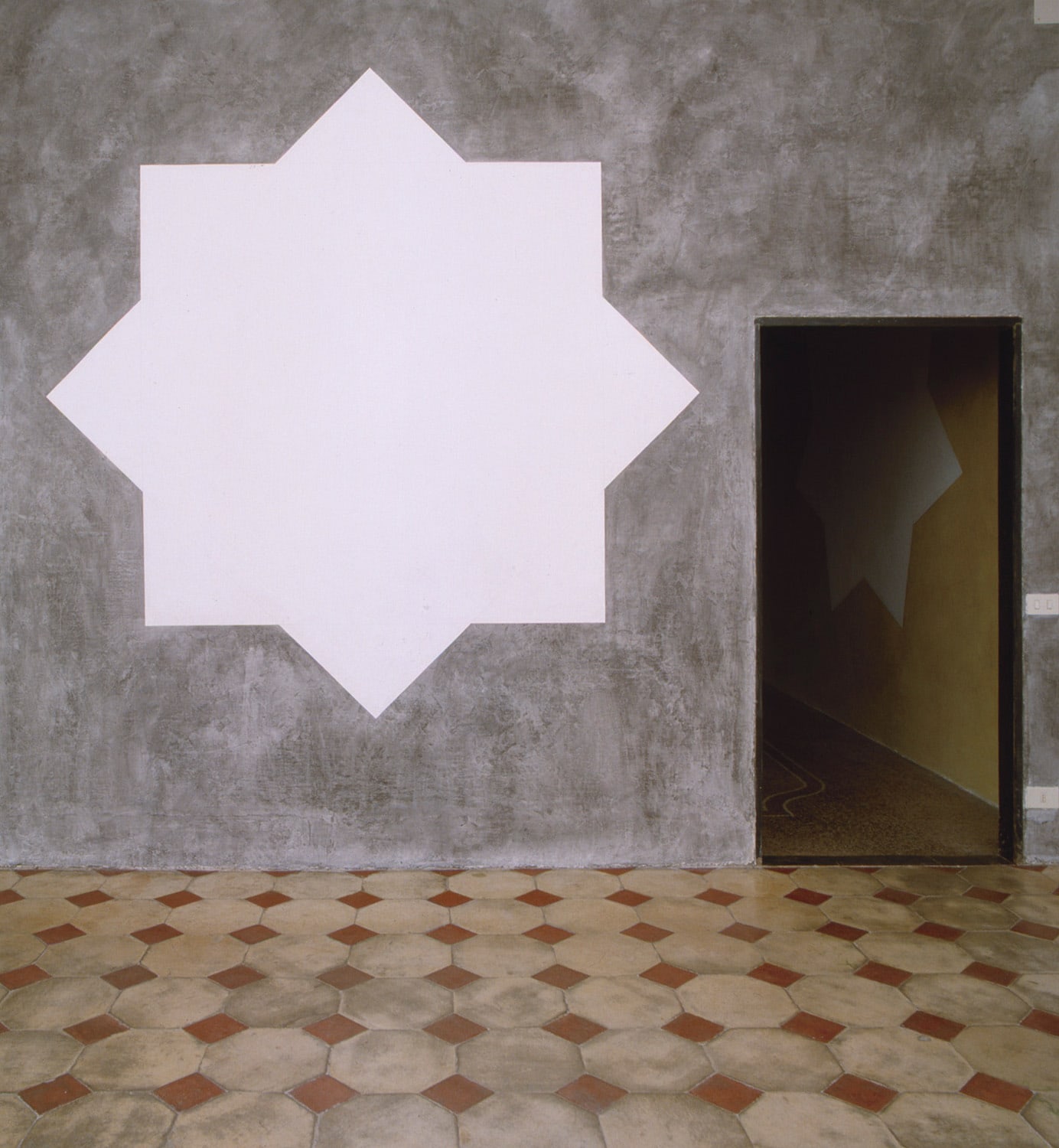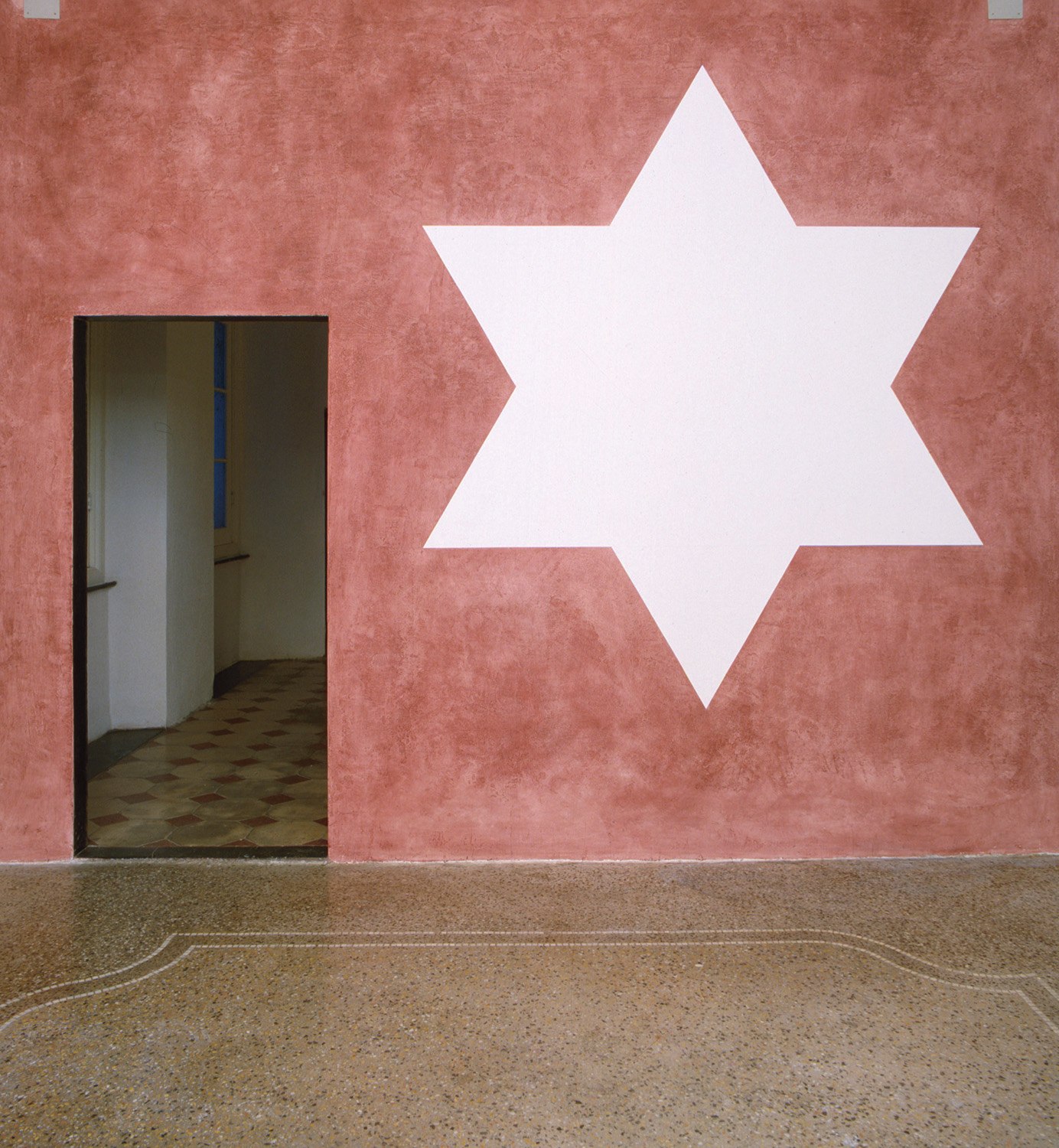







328
Sol LeWitt
Wall Drawing #408 A-E
Stars with four, five, six, seven, and eight points on black, blue, red, yellow, and gray walls, respectively. The stars are the white of the wall.
Stars with four, five, six, seven, and eight points on black, blue, red, yellow, and gray walls, respectively. The stars are the white of the wall.
B: Star with five points
C: Star with six points
D: Star with seven points
E: Star with eight points
Full-Cataloguing
Sol LeWitt began his celebrated wall drawings in 1968, when he first drew directly on the walls of Paula Cooper Gallery’s exhibition space in New York City. Over the next forty years, LeWitt continued to work in this innovative sphere, conceiving of over 1,300 wall drawings in total, with 3,000 plus installations realized during his lifetime. Even after LeWitt’s passing in 2007, the wall drawings are continually brought to life with new installations, each one differing slightly from the last, as new draftsmen execute the artist’s plan.
LeWitt was a pioneer among his contemporaries, challenging the notion of what it means to be an artist versus producer in the latter half of the 20th century. Like Donald Judd, whose renowned wall-bound sculptures were conceived of in the artist’s studio and manufactured in a factory, LeWitt championed the belief that an idea is ultimately the most important aspect of an artwork. Yet unlike Judd, whose fabricated works are mechanically produced, LeWitt invites interpretation and diversity in his wall drawings, positioning himself as choreographer or composer, rather than dancer or instrumentalist, in his final compositions.
The present two lots – Wall Drawing #408 A-E and Wall Drawing #1002 Splat – conceived of in 1983 and 2001, respectively, illustrate the evolution of this important part of LeWitt’s practice during these decades. Twelve years after first exhibiting his wall drawings, he moved from Manhattan to Spoleto, Italy in 1980, where the influence of Renaissance painting breathed new life into his artworks. As demonstrated in Wall Drawing #408 A-E, 1983, LeWitt began working in ink-wash, incorporating geometric forms, and favoring a refined color palette of primary colors and grey tones, all of which were directly inspired by frescoes that covered the walls of churches in Europe. LeWitt notes, “One lesson learnt from the fresco painters of the Quattrocento in Italy was that they had a sense of surface, of flatness where linear perspective was not used but a system of isometric perspective that flattened the forms… I have always tried to keep the depth as shallow as possible and the integrity of the wall.” (Sol LeWitt, quoted in Andrew Wilson, “Sol LeWitt Interviewed”, Art Monthly, no. 164, March 1993, pp. 3-9) In Wall Drawing #408 A-E, five stars, with four, five, six, seven, and eight points, are drawn directly on the wall. Per the artist’s specific instructions, the stars themselves are the negative space of the white wall, and each star’s background corresponds to a specific color. Through his use of geometric form and muted palette, LeWitt minimizes spatial depth, embracing flatness as the ultimate goal.
The 1990s saw a dramatic shift in the artist’s wall drawings, which coincided with his move back to the United States. Previously favoring simple compositions and restrained use of color, LeWitt expanded his visual language to include more vivid hues and complex designs, made possible by his transition to acrylic paints as his preferred medium. Wall Drawing #1002 Splat, executed in 2001, is illustrative of this shift in style, as dazzling blues, greens, oranges, yellows, and purples are arranged in a whimsical array of bands on the wall. He explains of these later works, “I had by this time reached a point in my use of color that had fulfilled all that was possible. I wanted to do something that was opposite [from the ink washes]. Instead of subtle, restrained, muted color, I wanted color (and form) that was raucous and vulgar.” (Sol LeWitt, quoted in Gary Garrels, “Interview with Sol LeWitt”, New Art Examiner, vol. 28, no. 5, December 2000, pp. 13-15) The evolution of style evidenced in the present lots demonstrates LeWitt’s continued commitment to the wall drawings throughout his illustrious career. Even after his passing, the drawings are timeless in their innate ability to be re-installed, a resounding testament to the artist’s enduring and influential contribution to the canon of contemporary art.
Sol LeWitt
American | B. 1928 D. 2007Connected to the Conceptual and Minimalist art movements of the 1960s and '70s, the artist and theorist Sol LeWitt was a pivotal figure in driving 'idea' art into the mainstream art discourse. Redefining what constituted a work of art and its genesis, LeWitt explored these ideas through wall drawings, paintings, sculptures, works on paper and prints.
Using a prescription to direct the creation of a work, the artist’s hand subordinated to the artist's thoughts, in direct contrast to the Abstract Expressionist movement earlier in the century. Actions, forms and adjectives were broken down into terms, serially repeated and reconfigured: grids, lines, shapes, color, directions and starting points are several examples. These directives and constructs fueled an influential career of vast variety, subtlety and progression.